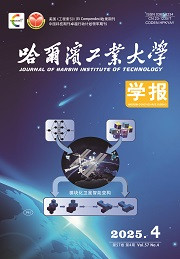| 引用本文: | 贾博文,王世刚,李天舒,张力中,赵岩.稀疏采集集成成像系统[J].哈尔滨工业大学学报,2018,50(5):68.DOI:10.11918/j.issn.0367-6234.201705020 |
| JIA Bowen,WANG Shigang,LI Tianshu,ZHANG Lizhong,ZHAO Yan.Sparse acquisition integral imaging system[J].Journal of Harbin Institute of Technology,2018,50(5):68.DOI:10.11918/j.issn.0367-6234.201705020 |
|
| 摘要: |
| 针对集成成像系统采用3DS MAX虚拟采集立体元图像(EI)阵列需要摆放大规模摄像机阵列难以应用到实际这个问题,建立了稀疏采集的集成成像系统.为了提高视差计算的准确率,提出采用颜色分割和积分投影的方法求取相邻图片每个颜色物体的视差平均值作为最终视差值.首先,在3DS MAX里建立虚拟场景和微透镜阵列模型.根据立体元图像(EI)和子图像(SI)之间的映射关系,采用通过先采集子图像再求取立体元图像的方法达到稀疏采集.对于渲染得到的图像采用基于颜色的图像分割法和积分投影法求取相邻图像中不同颜色物体的视差平均值,然后采用固定大小的矩形窗按照视差平均值平移截取渲染图像得到子图像.最后将子图像按顺序拼接,映射求取立体元图像用于立体显示.实验结果表明:原本需要59×41台摄像机才能拍摄得到的EI图像阵列仅需12×12台摄像机拍摄就可以得到,且立体显示效果明显.视差计算的误差率在水平方向和垂直方向均为0.433%,明显优于视差误差率为2.597%和4.762%的其它方法.文中方法更准确的实现方便快捷的集成成像稀疏采集系统,可用于大屏幕立体显示的EI内容采集.
|
| 关键词: 集成成像 基于颜色的图像分割 积分投影 窗截取 视差 映射 |
| DOI:10.11918/j.issn.0367-6234.201705020 |
| 分类号:TP751.1;TP751.2 |
| 文献标识码:A |
| 基金项目:国家自然科学基金重点项目(No.61631009) |
|
| Sparse acquisition integral imaging system |
|
JIA Bowen,WANG Shigang,LI Tianshu,ZHANG Lizhong,ZHAO Yan
|
|
(College of Communication Engineering, Jilin University, Changchun 130012, China)
|
| Abstract: |
| Using 3DS MAX to obtain elemental image (EI) array in the virtual integral imaging system need to put large-scale camera array which is difficult to be applied to practice. To solve this problem we establish a sparse acquisition integral imaging system. In order to improve the accuracy of disparity calculation, a method is proposed using color segmentation and integral projection to calculate the average disparity value of each color object between two adjacent render output pictures. First, a virtual scene and micro lens array model in 3DS MAX is established. According to the mapping relationship between EI and sub image (SI), we can obtain the SI first, and then calculate the EI. Based on color image segmentation method and integral projection method, we acquire the average value of the disparity from different color objects between adjacent images; and then translate a rectangular window of fixed size in accordance with the average disparity to intercept rendering images to get the sub images. Finally, after stitching and mapping of the sub images we obtain the elemental images, which can be used to display a 3-dimentioanal (3D) scene. The experimental results show that we can use only 12×12 cameras instead of 59×41 cameras to obtain elemental images, and the stereoscopic display effect is obvious. The error rate of disparity computation is 0.433% in both horizontal and vertical directions, which is obviously better than other methods of disparity error rate of 2.597% and 4.762%. The sparse acquisition integral imaging system is more accurate and more convenient which can be used for EI content acquisition for large screen stereoscopic display.
|
| Key words: integral imaging color based image segmentation integral projection window interception disparity mapping |







